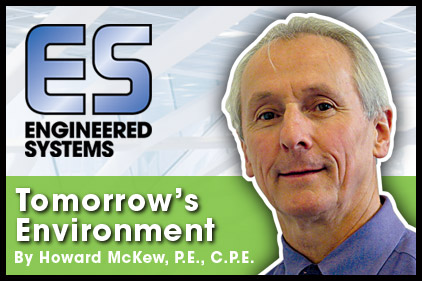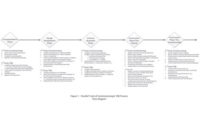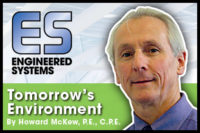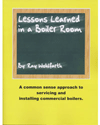I can’t say I’m one of the great orators of the HVAC industry, or even close to being in that league, but I thought I’d share with you my thoughts and experience when it comes to public speaking. To start, I always encourage individuals to take any opportunity to speak in a public forum because it will be good for them for several reasons. For one thing, it is in their best interest to be able to convey their ideas, assessments, or design intent to others. Other benefits to public speaking are that it forces the individual to prepare for the talk, and I find when you prepare for something, you inherently learn more about the topic yourself. Another benefit is that when you present a seminar to others, it is an opportunity to demonstrate your knowledge.
CHOOSE YOUR POSITION
Often, the speaker will be given the choice of speaking behind a podium or out in front of the screen where the PowerPoint presentation will be shown. I believe my worst presentations have been given stuck behind a podium, and I am sure many will agree that speaking from a podium is a challenge relative to the topic (e.g., Where do you put your hands while speaking? White-knuckled hands holding on to the podium? One-hand in your pocket while the other hand controls the computer slide show? Both hands in your pockets?).
I find myself more relaxed when I’m able to roam around out front of the screen. This helps you keep your audience alert because you can walk right up to someone while he is multi-tasking: half-listening while text messaging. It also helps to be able to walk in the direction of an individual when he asks a question because you are now giving him your personal attention. Another benefit of walking around, particularly in a large room, is you can speak from the left side of the presentation screen for a few slides and then move to the right side of the screen for a few slides, thus giving the audience on both sides of a large room equal attention.
KEEPING IT SIMPLE
When speaking and using a computerized slide show, I try to not have a lot of text on each slide. My strategy is to post two to five bulleted statements to simply remind me of what I want to talk about, and to expand the specific topic into a minute to minute-and-a-half discussion before going to the next bulleted phrase. Too much text puts a lot of stress on the audience, who will be distracted and try and read all of the words instead of listening to you speak.
When setting up your presentation, it is important to find out how much time you have to speak, taking into account time for questions. I prefer that questions be asked during my talk, and I don’t mind the interruption when someone raises a hand to ask a question. I believe it also keeps the audience interested whereas presentations that require the questions be held to the end can either result in a listener losing focus while they keep their question in mind or the listener simply deciding not to ask the question at the end because the discussion went past when it may have been appropriate to raise the issue. Then again, the listener may be anxious to leave for a variety of reasons that hopefully don’t include a boring presentation.
There is a lot more one needs to know to be proficient in giving a talk out in front of an audience, but this will hopefully raise awareness that there should be a strategy to delivering a strong and informative presentation. When someone invests the time to prepare for and present a discussion on a topic of interest, it usually results in both the speaker and the listeners reaping the benefits of the presentation.
For the speaker, she will have, for the moment, differentiated herself from others. Quite often this can also lead to a potential new project from a new client, someone whom the speaker may not have been aware was in the audience and who was there to hear something relevant to a current professional challenge (e.g., requirement to have an emergency HVAC security plan for everyday occurrences in place in the building they manage).
For the listeners, the seminar topic provides them with another person’s take on the topic, based on the speaker’s years of experience encapsulated into 45 minutes of talk. In the end, presenting your seminar is the proverbial win-win exercise. ES







